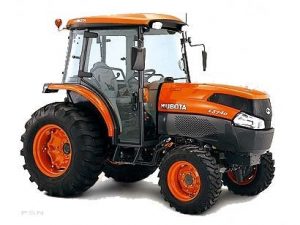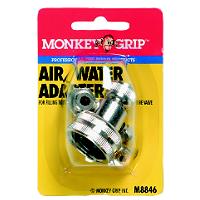Previously I wrote a blog on the Reasons For Liquid Ballasting Kubota Tractor Tires. I defined ballasting as the process of filling your tractor tires with liquid and I described that the reasons for doing such a thing were to assure stability, better traction and increased the safety of the tractor and also noted that ballasting reduced tire wear.
In this article, I will discuss how to ballast tires.
The first question you will need to answer is what liquid substance to use to ballast the tires. There are a number of fluids you can use in the process. They include water, calcium chloride, ethylene glycol antifreeze, propylene glycol antifreeze, windshield washer fluid, methanol, beet juice and polyurethane foam or flat fill. There is a chart at the Orange Tractor Talks website that goes into detail about each substance including the cost, freeze resistance, weight versus water, how safe it is and the availability of the liquid.
The next question is how much ballast to use?
Firestone AG has come up with a table that relates tire size to gallons of water, or gallons of water and pounds of calcium chloride, and how much ballast weight would be achieved per tire. If you are going for 50/50 antifreeze ballast, then use 50% of the total amount for water and 50% with antifreeze.
If you are using CaC12 solution, use 19 gallons of water with 95 lbs. of CaC12 yielding 253 lbs. of ballast weight. Depending on your ballast type, that puts another 400 to 500 lbs. of weight on the ground to help maximize traction.
If you plan to use your Kubota tractor during the winter and outside temperature is commonly below freezing, then it is recommended that you go to a tire shop that has the pumping equipment needed to install a mixed solution.
Tools Required
You will need these tools to perform the task:
• A Garden Hose
• Water Fill Attachment
• A Tire Fill Adapter
• A Floor Jack
The following steps show how to ballast the tire with water.
Step One: Use the floor jack to raise the wheel.
Step Two: Remove the valve stem core from the tire and release all the air except for about 5 to 7 psi. This will keep the tire bead seated in the rim.
Step Three: Rotate the tire so the valve stem is in the 12 o’clock position.
Step Four: Thread the water fill attachment to the garden hose.
Step Five: Attach the tire filler adapter to the water fill attachment, and then attach the tire filler adaptor to the valve stem.
Step Six: Turn on the garden hose. You may have to turn the water off sometimes to “burp” the tire. As the water goes into the tire it displaces the air causing compression. You should therefore loosen off the hose fitting attachment and let the trapped air out of the tire periodically as you fill it. Once the air has been evacuated, resume filling.
Fill the tire no more than 75% with water. This mark is achieved when the water has reached the level of the valve stem. Some recommend that you slightly overfill the tire with water and then hold the wheel upright to remove the water filler adapter. The extra water will purge itself down to the level of the valve stem.
Step Seven: When the water stops flowing out through the valve stem, put the valve core back on the tire.
Step Eight: Lower the floor jack until the full weight of the tire is on the floor.
Step Nine: Fill the tire to the correct air pressure as shown on the sidewall of the tire.
When you wish to remove the ballast, rotate the tire so that the valve stem is in the 6 o’clock position and remove the valve core. The air pressure will force the water out of the tire. If the water starts to come out too slowly, rotate the valve stem to the 12 o’clock position, fill the tire with the correct air pressure, then quickly rotate the tire back down to the 6 o’clock position to expel the rest of the water.
It is recommended to put more weight on to the rear tires. A ballast box filled with field rocks on the three point of the tractor will suffice. If you don’t have a ballast box, you can use the rototiller mounted on the back of the tractor to provide the weight.
(Source: Orangetractortalks.com)









